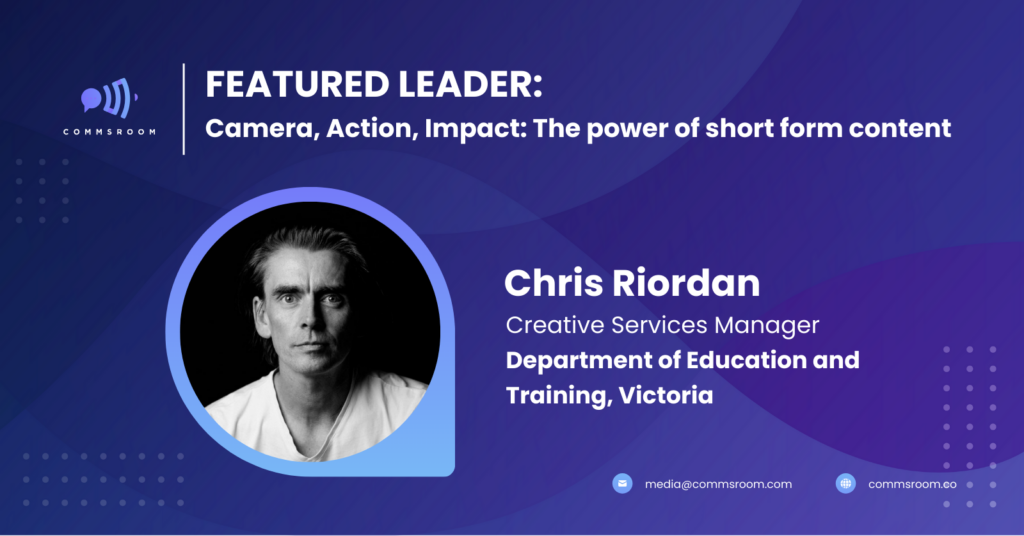- Have any questions?
- 02 7200 2179
- media@commsroom.co
- Have any questions?
- 02 7200 2179
- media@commsroom.co

With short form content you just need to be more economical with your story telling, and let the visuals do a lot of the heavy lifting.
I started out in advertising and video production, but that was more in a ‘Producer’ role, so I was doing the organising of things rather than the actual creating.
Then I was working at the Department of Human Services when the Black Saturday fires hit Victoria, and the department had a huge role in responding to the immediate aftermath.
There were so many people, doing so much amazing work, in such difficult circumstances that I asked if I could go out and capture the stories of some of our staff working in the Recovery Centres.
I was given permission and took my little handicam from home and went out and met with our staff and recorded their stories, then edited them on my Mac at home.
The videos were well received, and so I asked if I could buy some video equipment and start doing in-house video production. Within a year I was doing content creation full time, and within 2 years we had a video team.
11 years later I’m at the Department of Education managing a team of videographers and visual designers and pretending that I can do half of the things that they do.
The blessing and the curse of my role is that there is no such thing as a typical day. Some days I’m out on location with the video team filming, other days I’m working on photos, and on the remainder, I’m going through all the emails I missed while I was out filming and doing photo editing.
I still love doing the hands-on work, but I’m realising that my value now is making sure that my team has what they need to do their best work.
The short answer is ‘Would your audience want to watch it?’
The longer answer is, whether it’s short form or longer form, for our organisation I believe that every video should have:
1. A story – People don’t connect with a policy, program or product, the connect with someone’s experience of that policy, program or product;
2. A storyteller – You need someone who people will engage with and believe;
3. A visual element – Video is visual and people are probably watching it on their phone with the sound off, so make sure your video pops visually to get their attention.
With short form content you just need to be more economical with your story telling, and let the visuals do a lot of the heavy lifting.
Obviously this really depends on how much (if any) budget you have, if you have a team of creators or it’s just you and your phone, and who your audience is.
But as a very basic start:
1. Make sure you have a decent library of content before you launch, so that you always have videos coming out, even when your creating new ones.
2. Try new things to see what resonates with your audience. This doesn’t mean you have to jump on every trend that comes along, but don’t serve up the same content again and again.
3. Look at what you already have. Most organisations have existing videos that they’ve put money into, so see if you can repurpose this into short-form content.
Any time you get to combine; Dylan Alcott, schoolkids, and some great advice… is a winner: https://www.youtube.com/shorts/WFPKAkGqTdU
Using existing footage from previous years to make something super engaging: https://www.youtube.com/shorts/9Nf7c5-x_tA
Stop-motion to show all the great things in our Kinder Kits for all kids starting kinder: https://www.youtube.com/watch?v=BgqN8j3-PKE
Chris Riordan will be one of the speakers for upcoming the Comms and Social Media Summit 2023. Catch his session by registering your slot today.